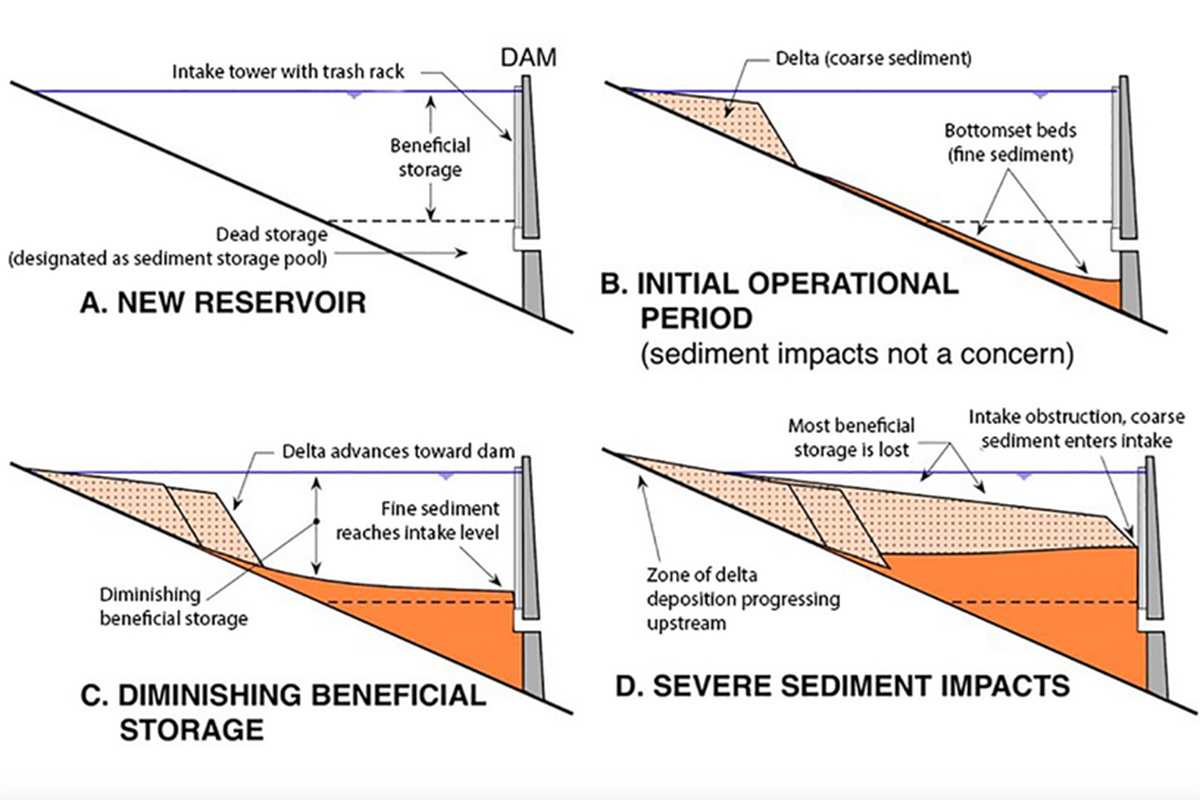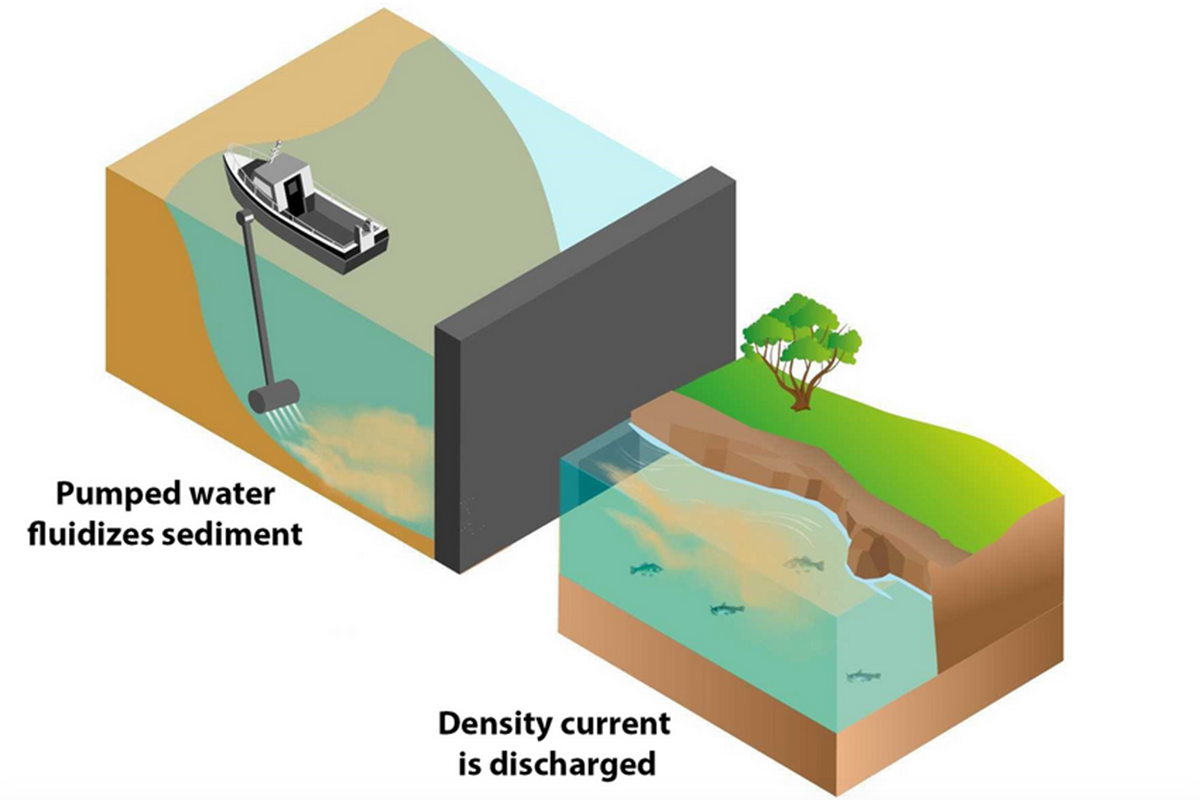Water Injection Dredging: A Demonstration Project
By Kyle Cappotto, Special to The Waterways Journal
Dams and reservoirs are critically important infrastructure. They provide flood control, water for drinking and irrigation, and recreational opportunities. Many dams were built in the early-to-mid 20th century and are nearing the end of their design life.
Over this time, they experience a corresponding loss of water storage volume due to sediment infilling. There are a variety of management strategies, including drawdown flushing, rerouting sediment and dredging. Dredging itself has many different techniques, but most require substantial cost and time.
In the heart of the Great Plains, the U.S. Army Corps of Engineers, with help from other federal agencies and the University of Kansas and Kansas State University, will apply a dredging technique called Water Injection Dredging (WID) in a novel setting. Using WID could be a game changer that overcomes past challenges and restores waterbodies to their original condition.

WID is commonly used in ports and harbors to maintain depths in shipping channels. The process works by pumping water at low pressure through nozzles on a horizontal bar suspended a short distance above the bed. This fluidizes the sediment. The sediment-water mixture (called a turbidity current) is more dense than ambient water, causing it to sink to the bottom and naturally flow downgradient.
The study site for this large-scale experiment is Tuttle Creek Lake, a federal reservoir in Kansas operated by the Corps of Engineers. The dam, built along the Big Blue River, was completed in 1962. From 1962 to 2009, the reservoir received an average of 5.8 million cubic yards of sediment per year, and the reservoir traps nearly 98 percent of that sediment inflow. As a result, more than half of the design volume for conservation water storage has been lost. Because of that, other problems arise, like clogged water intakes. These challenges, combined with the dam’s age, emphasize the need for a sediment management strategy.

In Tuttle Creek Lake, WID will produce a turbidity current that will travel down the reservoir slope (or even partially confined to the historic river channel) and be released through the submerged dam outlets.
My graduate research in environmental and water resources engineering at the University of Kansas has multiple facets related to WID applied to reservoirs. I am working on a 1D numerical model to predict the formation and evolution of the turbidity currents. This includes variables such as the current’s velocity, height, suspended sediment concentration and distance traveled.
With this information, I can estimate the total volume of sediment that will be removed. A second aspect of the project is examining how WID will affect water quality. The river drains an agricultural area, and there are nutrients suspended in the water and bound to sediment particles on the bed. WID will certainly have implications for nutrient concentrations in the water. These are important considerations for those who draw water from the lake, as well as the downstream river receiving this influx of water.
WID is an attractive strategy compared to other reservoir dredging techniques on a cost basis. Per cubic yard of sediment removed, expected costs for WID at Tuttle Creek Lake are $3 versus an estimated $6 to $15 for other forms of dredging. Should the demonstration project show promise, the methods of modeling and monitoring can be adapted to make predictions to determine if WID is suitable for reservoirs in other settings.
Kyle Cappotto is a master’s student in the University of Kansas Environmental & Water Resources Engineering program. He previously worked as a civil engineer for the Natural Resources Conservation Service in Louisiana. Cappotto hopes the first Tuttle Creek Lake demo will begin in the spring.


